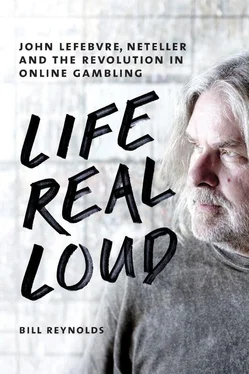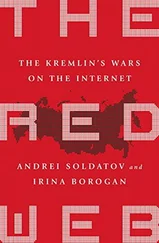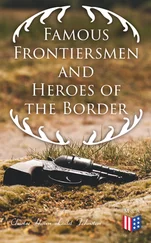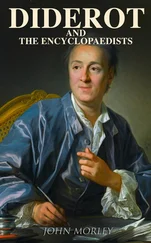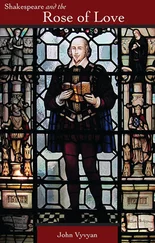Lefebvre knows that if you really want to know someone, all you need to do is have a candid conversation with someone close — like his mother, for instance. When I interviewed the religious, thoughtful Louise Lefebvre, the one question she wanted to ask was, “Why do you want to write a book about my son?”
Because your son, I suggested, is a larger-than-life symbolic character. Because many of his friends are a little bit in awe of him. They think he’s lived the lives of ten people, and they might be right. Because he represents a classic sixties kind of hedonism, on one hand wanting drugs and sex and rock ’n’ roll and wanting them all now, and on the other developing a moral imperative to change the world for the better. Because these are two visions in conflict. Because he’s vivacious and takes over a room and likes to have fun. Because he’s generous. Because it’s fun to report the cycle of behavior he had to work through. He had to fly everywhere — to see countries and rock shows and friends and his daughter in Ireland. And he had to go buy toys and toys and more toys — motorcycles, cars, planes, boats, houses, you name it. And he had to have the best clothes, wear them once or twice, and then take them to charity stores to empty his closets so he could buy more. And because, after a while, buying stuff all the time gets boring, so he changed. “That was selfish,” he says, “but I realized how happy my money could make other people and started to live through the wealth vicariously. Generosity is selfish that way.” Because his dual nature is compelling. Because he’s a metaphor for the baby boomers’ duality, the inner battle between freedom and responsibility.
Louise Lefebvre demurred.
* * *
When the federal marshals pull out of Malibu with their Neteller quarry in the back seat of the squad car and turn onto the PCH, Lefebvre thinks about how much he loves this terrain. He gazes out the window of the squad car. He thinks about the quietude of his own stretch. It’s Martin Luther King Day, and he sees all the social issues here, but, as he sings on “Independence Day,” he really loves L.A. and the cars and the smog and the people and the stars and the celebrities and the glitz and the socializing and the food and the ocean and the freedom.
“You couldn’t see Palos Verdes,” he sings about his home, forty-five miles away, around the coastal crescent. “But you could see the Milky Way.” The stars are available from Malibu, and he accessed them. He thinks of all the times he’s driven down this highway, checking out the surfers and kiteboarders and social climbers with their $1- or $2-million starter shacks, mere specs in a crowded landscape yet aphrodisiacs to so many dreamers. He sees it go by in a new kind of haze.
Hello Father, Goodbye Father
Louise Lefebvre was born and christened Theresa Louise Cullen on March 4, 1927. Over eighty years later, on a lovely autumn day in October, sitting in her twelfth-floor condominium, she is sharp and focused, with piercing eyes and a knowing, warm smile. Her head is crowned with a white-blond, chin-length bob. Her hair looks gorgeous, every strand just so. She looks like she takes a lot of care with it. Her bearing suggests she is at peace with herself, though she does pipe up about her children’s antics. She worries for them as only a mother can — even though they’re all now in their late-sixth or early-seventh decade.
Listening to Louise speak, again it occurs to me that if you really want to find out about somebody, you might start with their loved ones. They’re the ones who are the most perceptive and see into the soul of your subject. Enemies just want to defeat their adversaries, and their viewpoints are most likely colored in this way. In any event, they may not necessarily enhance the understanding of your subject.
This is the impression Louise creates as I speak to her at the kitchen table and look across the Elbow River to the neighborhood of Roxboro, where she raised three children as a single parent. Louise’s parents moved to Calgary around 1905, and she was born at home in Calgary’s Killarney neighborhood, near the intersection of Seventeenth Avenue SW and 26A Street SW, just west of Crowchild Trail. “I don’t know if Mom was in a hurry or if it was in vogue,” Louise said of her home birth, “but that’s how it happened.” Louise grew up in an Irish Catholic family. Everyone came from Irish stock, at least until Louise went off and married a military man with a French name. (He of course was still a Catholic.)
Louise’s family moved to a new place in Calgary’s Beltline district, closer to the core, on Thirteenth Avenue SW, just west of Fifth Street SW. She thought it was a beautiful old neighborhood at the time. “It still is, sort of.” At age fourteen, when Louise was in ninth grade, her family moved again, this time from the Beltline to a house on Garden Crescent SW, near Earl Grey Park, just off Elbow Drive and across the street from the Elbow River. In fact, the house on Garden is just up the road from where she lives now, on Twenty-Fifth Street SW, overlooking the river. “Yes,” she says, “I’m well traveled.”
Louise’s father, Harold Benedict Cullen, was a Canadian National Railway chief dispatcher stationed in Calgary. The family was proud of his job. They all thought it an important position that enhanced their social stature. He worked out of his own office at the CNR station, 141 Eighteenth Avenue SW, now the Nat Christie Centre, home base of the Alberta Ballet Company, right next to St. Mary’s Cathedral.
The local Catholic school was Holy Angels. Louise attended grade school there, as did all of her children. She also spent part of junior high there, because the girls stayed longer than the boys. At puberty, girls and boys were separated. The boys were sent to St. Mary’s Boys’ School after sixth grade. Eventually, Louise’s old school became a school for unwed pregnant teens. “So it went from the holy angels to the fallen angels.” The building still has an education function today, as a Montessori school.
When Louise was twenty, her friend Nora Valentine introduced her to a man named Joseph Edmond Lefebvre. Nora’s father, Colonel Valentine, was a friend of the Cullen family. He mentioned to Nora, who herself was dating an officer, that there was a young officer who needed to come to mess with a proper lady for a change. Nora and another friend, Teesy (Theresa) Ryan, brought Louise along. Ed wore his informal uniform to mess that night — khaki shirt and tie with a khaki wool crewneck sweater. According to Louise, she wore “clothes.” They danced.
He was known as “Mun” to his family and his pals in the military, but Louise called him Ed. He was a year older, and his family was from Espanola, Ontario. He was part of the Princess Patricia’s Canadian Light Infantry, stationed at Currie Barracks in Calgary, off Thirty-Third Avenue SW.
Currie Barracks was named after Sir Arthur William Currie, a soldier in World War I and the first Canadian to attain the rank of full general. The barracks opened in 1933, the year Currie died. Until the nineties, it had been home to Canadian Forces Base Calgary, or CFB Calgary. It was redeveloped into subdivisions, and the Princess Patricia’s now operate out of CFB Edmonton. “That’s where we had our reception, the officers’ mess,” Louise says, “after our wedding at St. Mary’s Cathedral.”
My wife, Laura Lind, and I were also married at the Currie Barracks officers’ mess. Despite the name, which might imply something casual and run-down to those unfamiliar with common military phraseology, the room was anything but a mess. It sported a formal presentation and featured sumptuous, shiny hardwood floors and paneling. A large framed picture of Princess Patricia of Connaught hung impressively and regally above a mantelpiece. Princess Patricia, or Patsy, as friends and family knew her, was Queen Victoria’s granddaughter. Her father, the Duke of Connaught, was appointed governor general of Canada in 1911. In 1918, Patricia was appointed colonel-in-chief of Princess Patricia’s Canadian Light Infantry. The unit was named for her, and she held the position until her death in 1974. Her cousin, also named Patricia, succeeded her.
Читать дальше
